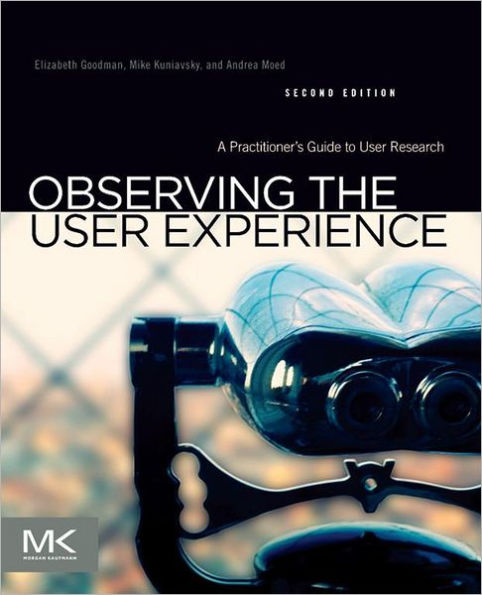Observing the User Experience: A Practitioner's Guide to User Research aims to bridge the gap between what digital companies think they know about their users and the actual user experience. Individuals engaged in digital product and service development often fail to conduct user research. The book presents concepts and techniques to provide an understanding of how people experience products and services. The techniques are drawn from the worlds of human-computer interaction, marketing, and social sciences. The book is organized into three parts. Part I discusses the benefits of end-user research and the ways it fits into the development of useful, desirable, and successful products. Part II presents techniques for understanding people's needs, desires, and abilities. Part III explains the communication and application of research results. It suggests ways to sell companies and explains how user-centered design can make companies more efficient and profitable. This book is meant for people involved with their products' user experience, including program managers, designers, marketing managers, information architects, programmers, consultants, and investors. - Explains how to create usable products that are still original, creative, and unique - A valuable resource for designers, developers, project managers - anyone in a position where their work comes in direct contact with the end user - Provides a real-world perspective on research and provides advice about how user research can be done cheaply, quickly and how results can be presented persuasively - Gives readers the tools and confidence to perform user research on their own designs and tune their software user experience to the unique needs of their product and its users
1111101672
Observing the User Experience: A Practitioner's Guide to User Research
Observing the User Experience: A Practitioner's Guide to User Research aims to bridge the gap between what digital companies think they know about their users and the actual user experience. Individuals engaged in digital product and service development often fail to conduct user research. The book presents concepts and techniques to provide an understanding of how people experience products and services. The techniques are drawn from the worlds of human-computer interaction, marketing, and social sciences. The book is organized into three parts. Part I discusses the benefits of end-user research and the ways it fits into the development of useful, desirable, and successful products. Part II presents techniques for understanding people's needs, desires, and abilities. Part III explains the communication and application of research results. It suggests ways to sell companies and explains how user-centered design can make companies more efficient and profitable. This book is meant for people involved with their products' user experience, including program managers, designers, marketing managers, information architects, programmers, consultants, and investors. - Explains how to create usable products that are still original, creative, and unique - A valuable resource for designers, developers, project managers - anyone in a position where their work comes in direct contact with the end user - Provides a real-world perspective on research and provides advice about how user research can be done cheaply, quickly and how results can be presented persuasively - Gives readers the tools and confidence to perform user research on their own designs and tune their software user experience to the unique needs of their product and its users
44.99
In Stock
5
1

Observing the User Experience: A Practitioner's Guide to User Research
608
Observing the User Experience: A Practitioner's Guide to User Research
608eBook
$44.99
$59.95
Save 25%
Current price is $44.99, Original price is $59.95. You Save 25%.
Related collections and offers
44.99
In Stock

Product Details
| ISBN-13: | 9780123848703 |
|---|---|
| Publisher: | Morgan Kaufmann Publishers |
| Publication date: | 09/01/2012 |
| Series: | Interactive Technologies |
| Sold by: | Barnes & Noble |
| Format: | eBook |
| Pages: | 608 |
| File size: | 6 MB |
About the Author
What People are Saying About This
From the B&N Reads Blog
